Genome-wide interference of ZNF423 with B-lineage transcriptional circuitries in acute lymphoblastic leukemia
- PMID: 33646306
- PMCID: PMC7948270
- DOI: 10.1182/bloodadvances.2020001844
Genome-wide interference of ZNF423 with B-lineage transcriptional circuitries in acute lymphoblastic leukemia
Abstract
Aberrant expression of the transcriptional modulator and early B-cell factor 1 (EBF1) antagonist ZNF423 has been implicated in B-cell leukemogenesis, but its impact on transcriptional circuitries in lymphopoiesis has not been elucidated in a comprehensive manner. Herein, in silico analyses of multiple expression data sets on 1354 acute leukemia samples revealed a widespread presence of ZNF423 in various subtypes of acute lymphoblastic leukemia (ALL). Average expression of ZNF423 was highest in ETV6-RUNX1, B-other, and TCF3-PBX1 ALL followed by BCR-ABL, hyperdiploid ALL, and KMT2A-rearranged ALL. In a KMT2A-AFF1 pro-B ALL model, a CRISPR-Cas9-mediated genetic ablation of ZNF423 decreased cell viability and significantly prolonged survival of mice upon xenotransplantation. For the first time, we characterized the genome-wide binding pattern of ZNF423, its impact on the chromatin landscape, and differential gene activities in a B-lineage context. In general, chromatin-bound ZNF423 was associated with a depletion of activating histone marks. At the transcriptional level, EBF1-dependent transactivation was disrupted by ZNF423, whereas repressive and pioneering activities of EBF1 were not discernibly impeded. Unexpectedly, we identified an enrichment of ZNF423 at canonical EBF1-binding sites also in the absence of EBF1, which was indicative of intrinsic EBF1-independent ZNF423 activities. A genome-wide motif search at EBF1 target gene loci revealed that EBF1 and ZNF423 co-regulated genes often contain SMAD1/SMAD4-binding motifs as exemplified by the TGFB1 promoter, which was repressed by ZNF423 outcompeting EBF1 by depending on its ability to bind EBF1 consensus sites and to interact with EBF1 or SMADs. Overall, these findings underscore the wide scope of ZNF423 activities that interfere with B-cell lymphopoiesis and contribute to leukemogenesis.
© 2021 by The American Society of Hematology.
Conflict of interest statement
Conflict-of-interest disclosure: The authors declare no competing financial interests.
Figures

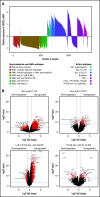

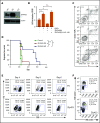
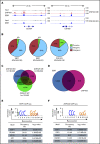
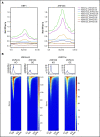
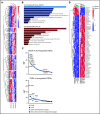
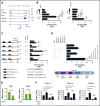
Similar articles
-
ZNF423 and ZNF521: EBF1 Antagonists of Potential Relevance in B-Lymphoid Malignancies.Biomed Res Int. 2015;2015:165238. doi: 10.1155/2015/165238. Epub 2015 Dec 16. Biomed Res Int. 2015. PMID: 26788497 Free PMC article. Review.
-
Aberrant ZNF423 impedes B cell differentiation and is linked to adverse outcome of ETV6-RUNX1 negative B precursor acute lymphoblastic leukemia.J Exp Med. 2013 Oct 21;210(11):2289-304. doi: 10.1084/jem.20130497. Epub 2013 Sep 30. J Exp Med. 2013. PMID: 24081948 Free PMC article.
-
ZNF423: Transcriptional modulation in development and cancer.Mol Cell Oncol. 2014 Dec 23;1(3):e969655. doi: 10.4161/23723548.2014.969655. eCollection 2014 Jul-Sep. Mol Cell Oncol. 2014. PMID: 27308357 Free PMC article. Review.
-
Pioneering Activity of the C-Terminal Domain of EBF1 Shapes the Chromatin Landscape for B Cell Programming.Immunity. 2016 Mar 15;44(3):527-541. doi: 10.1016/j.immuni.2016.02.021. Immunity. 2016. PMID: 26982363
-
Interaction of CCR4-NOT with EBF1 regulates gene-specific transcription and mRNA stability in B lymphopoiesis.Genes Dev. 2016 Oct 15;30(20):2310-2324. doi: 10.1101/gad.285452.116. Epub 2016 Nov 2. Genes Dev. 2016. PMID: 27807034 Free PMC article.
Cited by
-
"A novel approach to understanding the role of TCF3 mutations in childhood B-cell precursor acute lymphoblastic leukemia".Transl Oncol. 2025 Aug 13;61:102505. doi: 10.1016/j.tranon.2025.102505. Online ahead of print. Transl Oncol. 2025. PMID: 40811980 Free PMC article. Review.
-
Nonequivalence of Zfp423 premature termination codons in mice.bioRxiv [Preprint]. 2025 Jun 2:2025.05.30.656936. doi: 10.1101/2025.05.30.656936. bioRxiv. 2025. Update in: Genetics. 2025 Aug 18:iyaf164. doi: 10.1093/genetics/iyaf164. PMID: 40501617 Free PMC article. Updated. Preprint.
References
-
- Kuiper RP, Schoenmakers EF, van Reijmersdal SV, et al. . High-resolution genomic profiling of childhood ALL reveals novel recurrent genetic lesions affecting pathways involved in lymphocyte differentiation and cell cycle progression. Leukemia. 2007;21(6):1258-1266. - PubMed
-
- Mullighan CG, Goorha S, Radtke I, et al. . Genome-wide analysis of genetic alterations in acute lymphoblastic leukaemia. Nature. 2007;446(7137):758-764. - PubMed
-
- Mandel EM, Grosschedl R. Transcription control of early B cell differentiation. Curr Opin Immunol. 2010;22(2):161-167. - PubMed
-
- Parra M. Epigenetic events during B lymphocyte development. Epigenetics. 2009;4(7):462-468. - PubMed
Publication types
MeSH terms
Substances
LinkOut - more resources
Full Text Sources
Other Literature Sources
Miscellaneous

